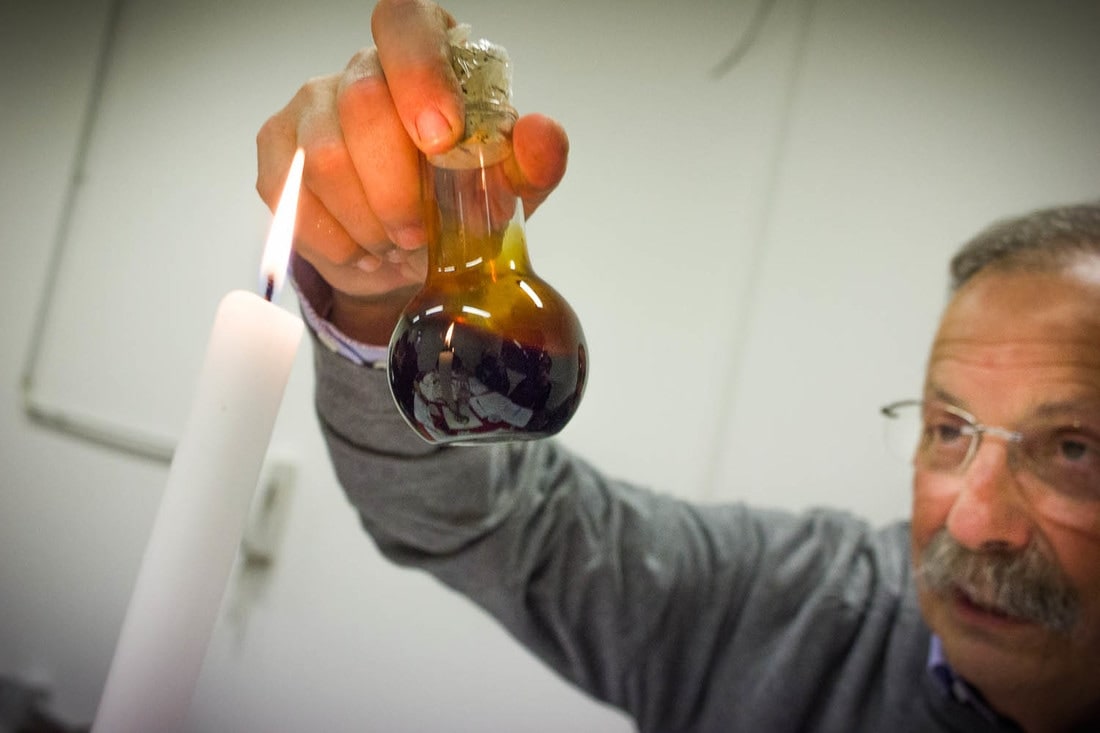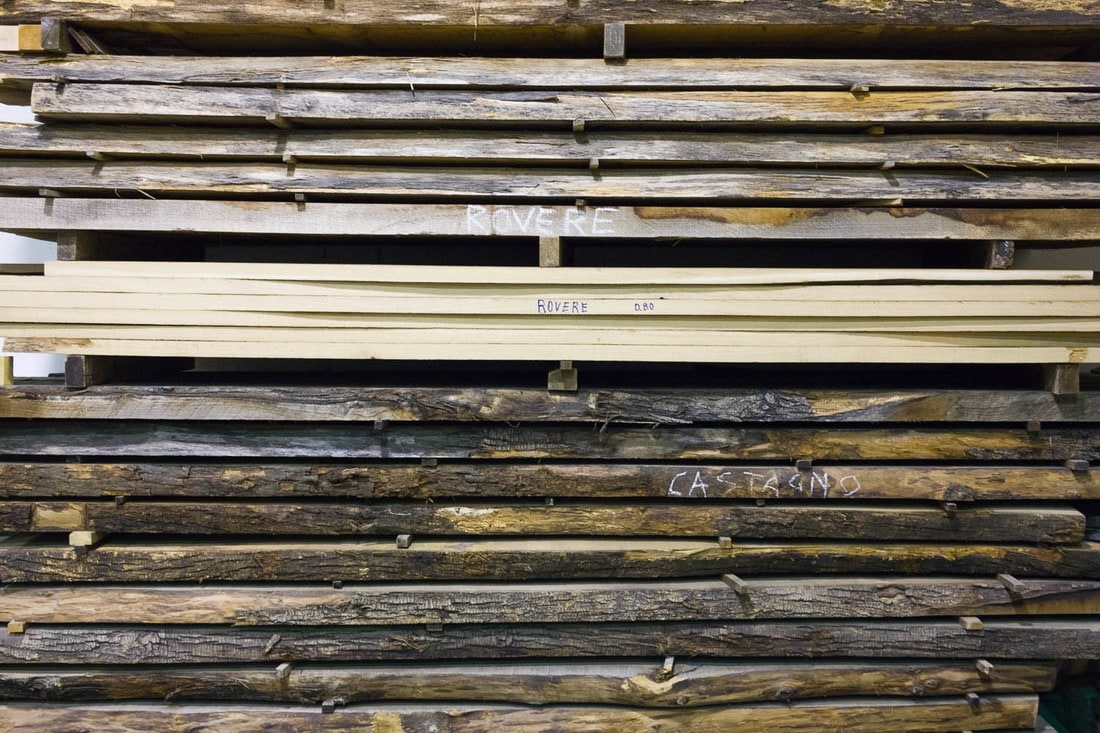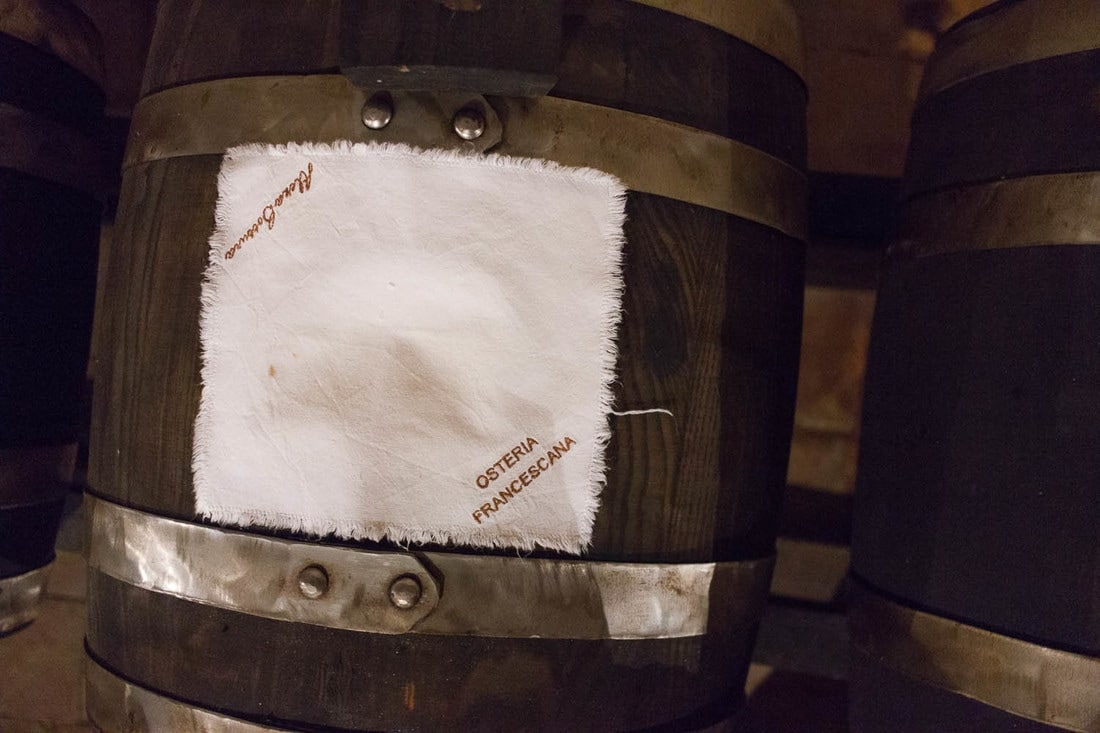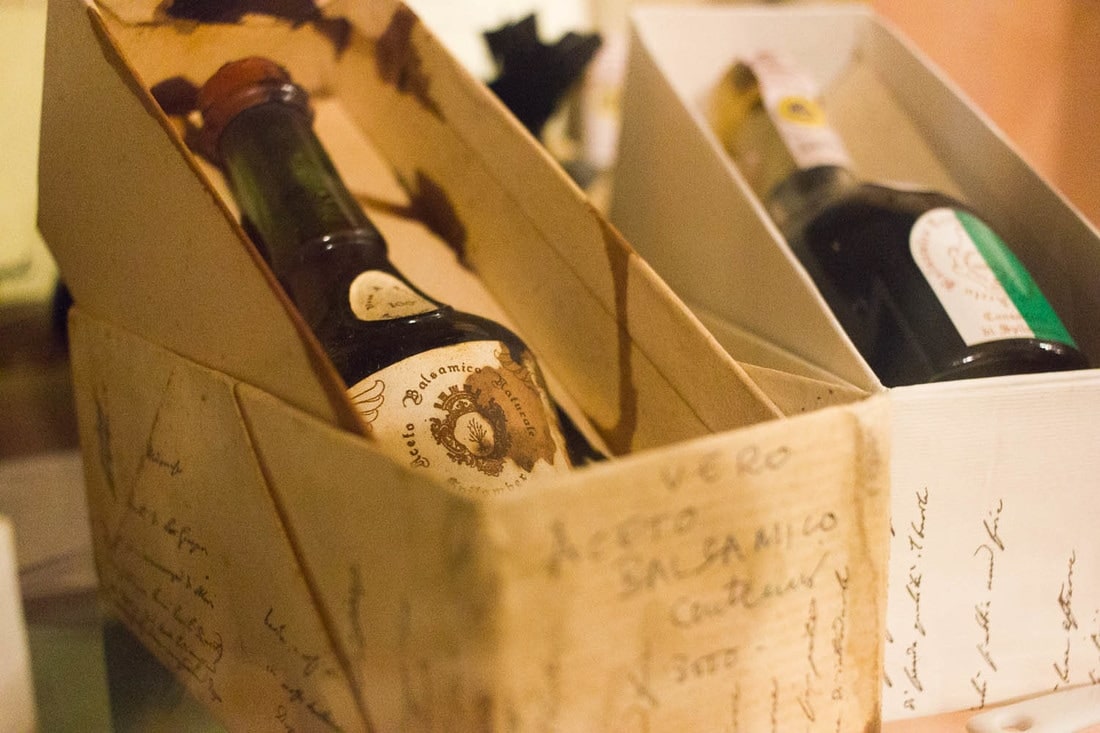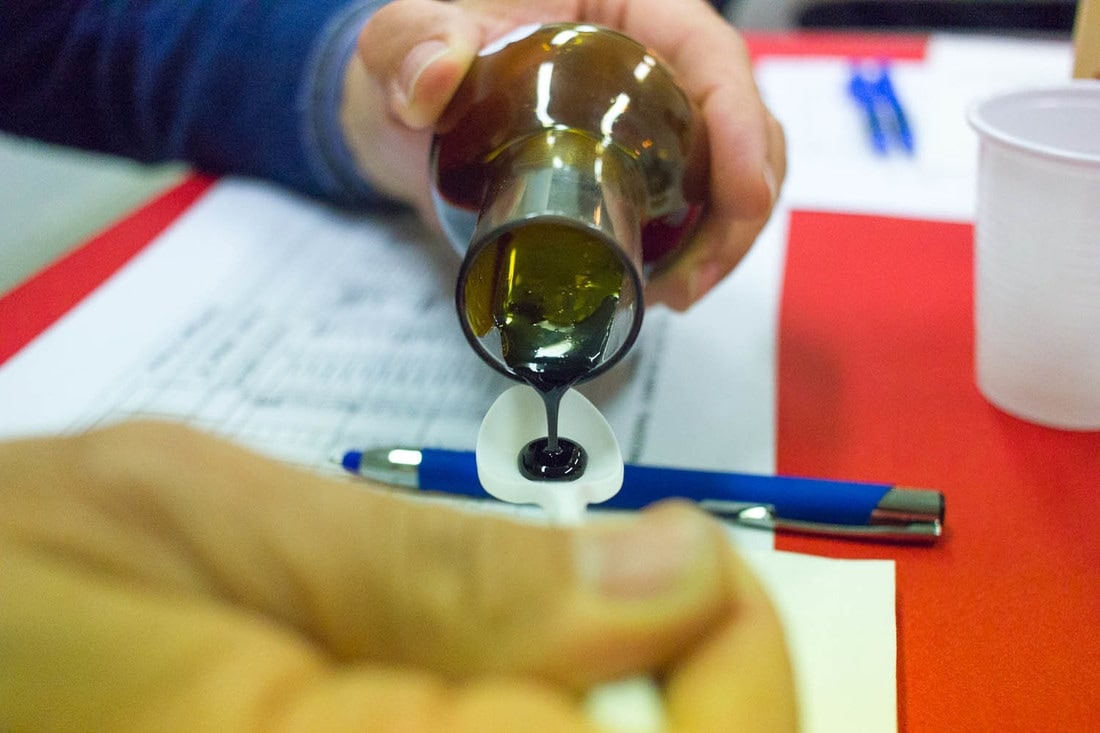5 Things you have to know about Balsamic Vinegar of Modena
- Category: Eat
I spent the last 2 months at school, a very special school.
Some people call it the University of Balsamic. It's a course held by the masters of Consorteria dell'Aceto Balsamico Tradizionale di Modena, the only association that promotes the culture of Balsamic according to the tradition.
I studied agriculture, chemistry and tasting. I visited a barrel producer and a proper acetaia at work. I now have a handbook with all the best practices to make Balsamic.
Here are 5 things I've learned that I hope will make you fall in love with this unique product.
Some people call it the University of Balsamic. It's a course held by the masters of Consorteria dell'Aceto Balsamico Tradizionale di Modena, the only association that promotes the culture of Balsamic according to the tradition.
I studied agriculture, chemistry and tasting. I visited a barrel producer and a proper acetaia at work. I now have a handbook with all the best practices to make Balsamic.
Here are 5 things I've learned that I hope will make you fall in love with this unique product.
1. Which is the best grape for Balsamic
Grape must is the only ingredient of Balsamic. The one and only you should read in the list of ingredients.
So vegan, celiacs and vegetarian don't worry: it's perfect for you all.
One important rule I've learned is that:
One important rule I've learned is that:
With Balsamic a small mistake could become a big one. But you'll only find out after a lot of time.
Thus it's very important to work only with prime ingredients: trebbiano (white), trebbiano di Spagna (white) and ancellotta (red) are the best grape to use for Balsamic.
They're very sweet grapes, and sweetness is very important to give Balsamic the right density over the years. All kinds of Lambrusco (red) or Sauvignon (white) can be used too.
They're very sweet grapes, and sweetness is very important to give Balsamic the right density over the years. All kinds of Lambrusco (red) or Sauvignon (white) can be used too.
Different kind of wood boards are dried for 8/10 years before being transformed into barrels
2. Different wood, different taste
It's not only the kind of grape that determines the quality of Balsamic.
The wood-made barrels where the vinegar is stored for years have a very important role.
Chestnut, juniper, durmast, mulberry, cherry tree but also apple and pear woods can be used to make the barrels.
Each woods have specific characteristics that influence the flavours and perfumes of Balsamic.
The more kinds of different woods you use in your batch of barrels, the better.
At Consorteria I've seen a single barrel made with 10 different kinds of wood. Guess who owns that? Massimo Bottura of Osteria Francescana.
The wood-made barrels where the vinegar is stored for years have a very important role.
Chestnut, juniper, durmast, mulberry, cherry tree but also apple and pear woods can be used to make the barrels.
Each woods have specific characteristics that influence the flavours and perfumes of Balsamic.
The more kinds of different woods you use in your batch of barrels, the better.
At Consorteria I've seen a single barrel made with 10 different kinds of wood. Guess who owns that? Massimo Bottura of Osteria Francescana.
Massimo Bottura has its own set of barrels inside Consorteria of Spilamberto
3. DOP or IGP Balsamic?
DOP and IGP are UE trademarks with a huge difference.
A DOP product must be completely produced in a limited area.
An IGP product gets its peculiar characteristics from a territory, but not all the factors that contribute to obtaining the product have to come from that area.
So DOC Balsamic is entirely made in Modena, using grapes and following a strict set of rules to determine the production process.
Also the bottle is different.
DOP Balsamic must be bottled in a glass designed by Giorgetto Giugiaro in 1988, inspired by the shape of Modena Cathedral.
The front label changes according to the different producers, the back is always the same.
During our Modena food tour we taste only DOP vinegar (12 and 25 years aged). So if you love food made with quality and passion you can't be wrong.
A DOP product must be completely produced in a limited area.
An IGP product gets its peculiar characteristics from a territory, but not all the factors that contribute to obtaining the product have to come from that area.
So DOC Balsamic is entirely made in Modena, using grapes and following a strict set of rules to determine the production process.
Also the bottle is different.
DOP Balsamic must be bottled in a glass designed by Giorgetto Giugiaro in 1988, inspired by the shape of Modena Cathedral.
The front label changes according to the different producers, the back is always the same.
During our Modena food tour we taste only DOP vinegar (12 and 25 years aged). So if you love food made with quality and passion you can't be wrong.
On the left is the first historic bottle belonging to Consorteria, on the right the one designed by Giugiaro
4. How to taste Balsamic
When I sat at the tasting table for the first time I was quite nervous.
Vittorio, my master of Balsamic, made jokes and smiled under his moustache, but my mind was asking:
Andrea, is your mouth sensitive enough to understand quality?
If they're going to give you an apple vinegar, will you recognize it?
Was it a good idea to have that garlic bruschetta for dinner?
The last answer is: absolutely no.
You don't have to eat heavy foods, alcohol or smoke before a tasting. So keep that tigelle and borlenghi for later, please.
About the other questions, it's a matter of training and experience.
3 different parameters are used to determine the quality of Balsamic vinegar:
- Visual: density and colour
- Smell: acidity and perfume
- Flavour: balance and aromas
Almost all the senses are involved in the evaluation process that takes time and effort.
First of all, you have to look at the Balsamic through the light of a candle (because this light is always the same everywhere), to show the real colors that should be dark brown, amber.
Then smell inside the bottle to get the perfumes that have to be refined, persistent and the acidity that should be high and balanced
Finally, taste to get the intense flavours and the harmony between sweetness and acidity.
Vittorio, my master of Balsamic, made jokes and smiled under his moustache, but my mind was asking:
Andrea, is your mouth sensitive enough to understand quality?
If they're going to give you an apple vinegar, will you recognize it?
Was it a good idea to have that garlic bruschetta for dinner?
The last answer is: absolutely no.
You don't have to eat heavy foods, alcohol or smoke before a tasting. So keep that tigelle and borlenghi for later, please.
About the other questions, it's a matter of training and experience.
3 different parameters are used to determine the quality of Balsamic vinegar:
- Visual: density and colour
- Smell: acidity and perfume
- Flavour: balance and aromas
Almost all the senses are involved in the evaluation process that takes time and effort.
First of all, you have to look at the Balsamic through the light of a candle (because this light is always the same everywhere), to show the real colors that should be dark brown, amber.
Then smell inside the bottle to get the perfumes that have to be refined, persistent and the acidity that should be high and balanced
Finally, taste to get the intense flavours and the harmony between sweetness and acidity.
A master tastes balsamic and fills out the report card to judge the quality
5. How to use Balsamic
Like all the best foods, Balsamic Vinegar of Modena doesn't need any special cooking to be great.
Actually the opposite.
The only rule you need to know is not to warm it. Put it away from the heat. Always. It's already cooked must and you'd destroy all the flavours and perfumes that took years to be created.
If it's not dense enough it's because it's still young, maybe 12 years or even less. Then use it on a green salad: its acidity is perfect with some cheese and nuts.
If you spent 90€ on a 25-year-old Tradizionale you want to get the best out of it. Then enjoy it as it is.
Take a teaspoon of Balsamic after dinner, instead of whiskey. It will help your digestion and your doctor will be proud of you.
Actually the opposite.
The only rule you need to know is not to warm it. Put it away from the heat. Always. It's already cooked must and you'd destroy all the flavours and perfumes that took years to be created.
If it's not dense enough it's because it's still young, maybe 12 years or even less. Then use it on a green salad: its acidity is perfect with some cheese and nuts.
If you spent 90€ on a 25-year-old Tradizionale you want to get the best out of it. Then enjoy it as it is.
Take a teaspoon of Balsamic after dinner, instead of whiskey. It will help your digestion and your doctor will be proud of you.
Already in love with Balsamic?
Wait to taste it at least!
Dig deep into this unique food with a real expert:
Comments
-
Vinny @ Dream Kitchen Solutions
This is one of the most informative articles I have read about Balsamic. I was never aware the fact that the quality of wood used for barrels also has an impact on quality of balsamic. All in all, great article. Thanks for sharing !
-
Andrea
Thanks Vinny, glad you appreciate my efforts ;)
